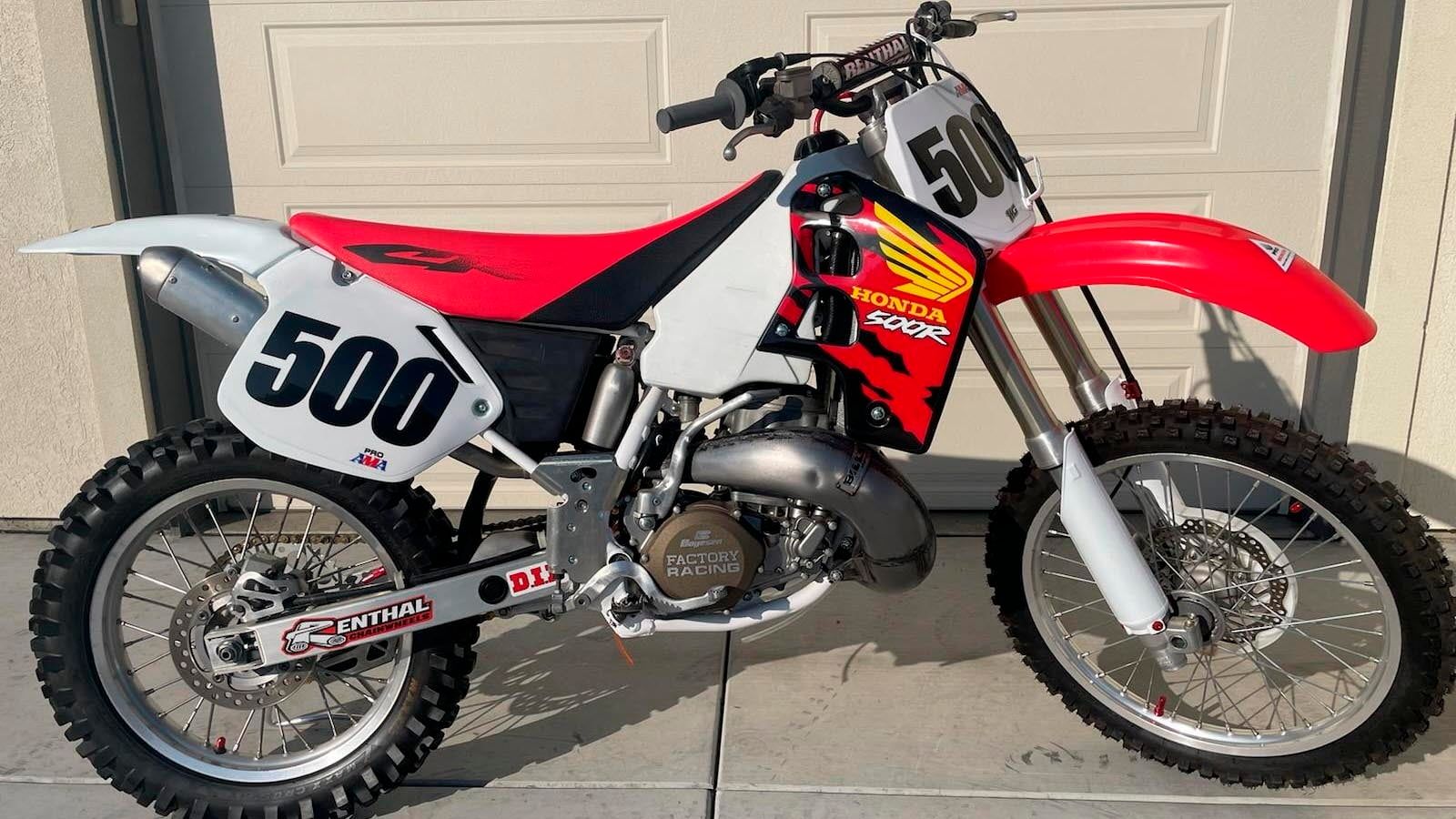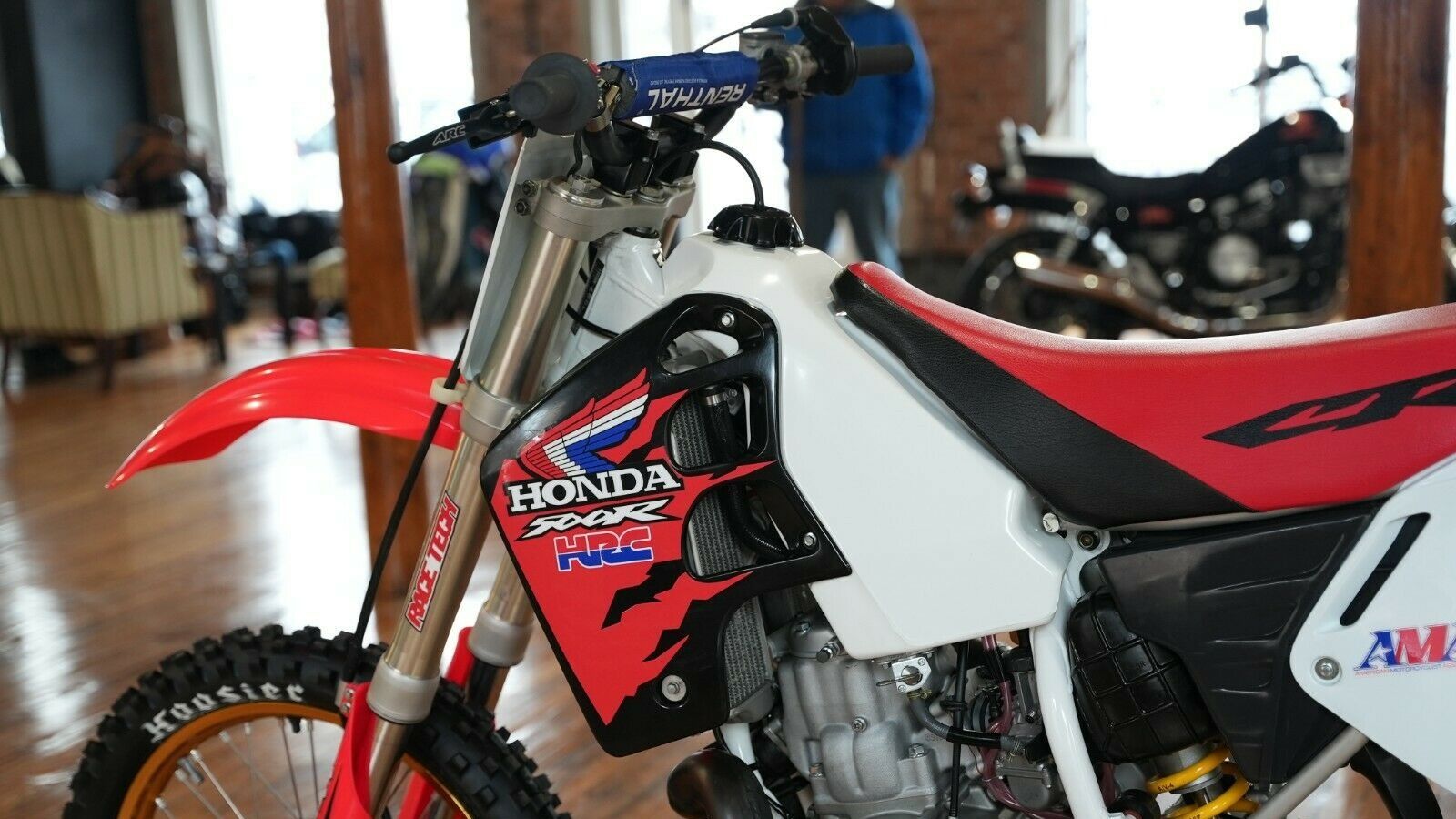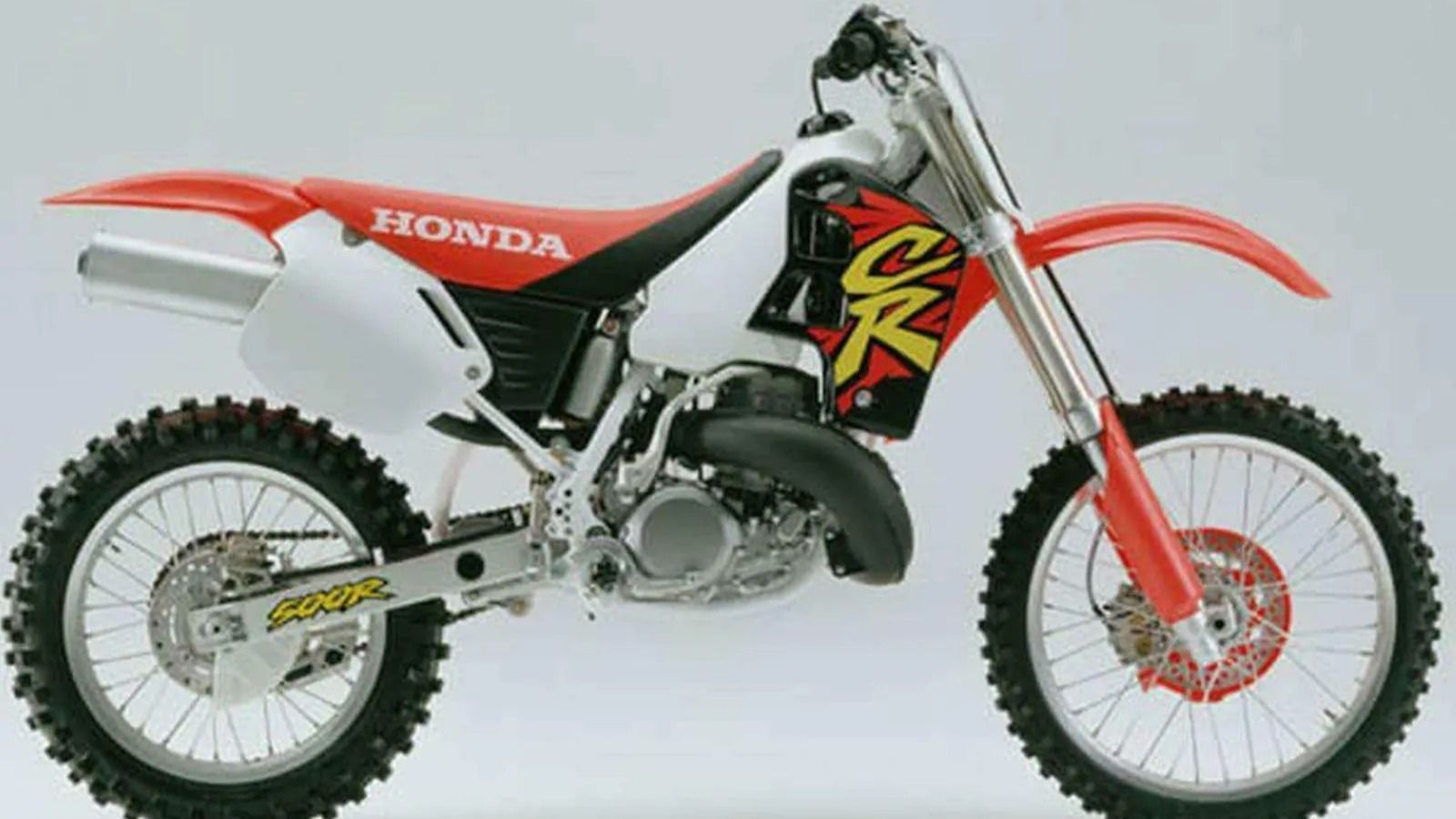In the past, Honda has been credited with making some of the best bikes the world has ever seen. Iconic bikes like the Honda CBR900RR Fireblade, Honda Valkyrie GL1500C, and the Honda VFR 750 have all been etched into the hearts and minds of bike enthusiasts all over. From sports bikes to cruisers, and everything in between really, Honda rightfully earned the kind of accolades and global brand recognition that the company enjoys today.
One entry on the elite list of iconic Honda bikes produced in the past is the Honda CR500. Designed as an open-class racing dirt bike with a nippy 2-stroke engine, the Honda CR500 was easily one of the most powerful machines in its segment back in the day. In this piece, we take a closer look at why this beauty deserves its place in the upper echelons of biking royalty.
Origins Of The ‘Ping King’
The first ever iteration of the Honda CR500 was released in 1984 with a 491cc air-cooled, 2-stroke engine that could produce up to 64 horsepower, offering 53.3 pound-feet of torque, and reaching speeds over 90 mph. Dubbed the ‘Ping King’ upon release, the CR500 came in as a successor to the CR480 in the famous lineup of Honda ‘Competition Racer’ or ‘CR’ bikes. Other notable features on the original 1984 CR500 included CDI ignition, a multi-plate wet clutch, and a fuel tank of 2.38 gallons.
While the 1984 CR500 was well-received by and large, it was the improved 1985 version of the CR500 that was widely considered as one of the best dirt bikes money could buy. Switching the air-cooled engine on the 1984 iteration with a water-cooled one, the 1985 CR500 also featured a massive 38mm flat-side carburetor, along with Dunlop tires as stock.
With a dry weight of just 222 pounds, the water-cooled CR500 was a fast and powerful machine that liked to be revved out across its 5-speed gearbox. So much so that experienced riders were known to pull off wheelies on it in the 4th and even 5th gear! A large carburetor coupled with a very small power band meant that the CR500 could accelerate lightning quick, its throttle akin to a modern-day 'NOS' booster seen on fast (and furious?) super cars.
Sheer Dominance In The Trade
Built as a purpose-driven dirt bike, the Honda CR500 soon developed a reputation as a chunky 2-stroke beast that featured brute strength and ripping speed. Despite competition from the likes of the Kawasaki KX500 and the Yamaha YZ490, among many others, the CR500 would come to be regarded as arguably the most powerful open-class bikes of its time. From 1986 to 1988, the 500cc 2-stroke American Motorcyclist Association (AMA) Motocross Championship was dominated by Honda, with David Bailey being crowned champion in 1986, and Rick Johnson winning the title successively in the following two years.
Dave Thorpe, three-time World 500cc MX champion, would later cement its place further by stating that the CR500 “was so far ahead of its time”. Always intended for more experienced riders and pro racers as opposed to beginners, the CR500 found many other takers in the ongoing MX scene of the day too. Furthermore, as testament to the CR500’s greatness, the bike was being raced around in competitive environments as late as 2017, a whopping 16 years after Honda ceased production for the CR500 in 2001!
In the following video, one can witness British Motocross racer Nev Bradshaw racing his 1989 Honda CR500 at the Foxhills track for the British 2-Stroke Dirt Bike Championship.
Putting Its Best Years Behind It
While the Honda CR500 was continuously improved upon in minor ways throughout its production run up till 2001, many enthusiasts believe that the early models of the bike, especially from 1985 to 1990, were its best iterations ever. Major changes in the late 80s included a shift to disc brakes on both tires in 1987, and minor suspension upgrades in 1989.
In the early 90s, notably, the CR500 would receive upgrades to its exhaust system, and would also start featuring funky decals and graphics. Underneath, the only other major change came in 1995 when Showa suspension components were replaced by Kayaba ones following criticism from users. Most importantly, Honda began retuning (or de-tuning, for all practical purposes) the CR500's engine, and as a result, the bike’s power output would see a gradual drop, starting at 64 horsepower in the 1984 model and coming down to about 56 horsepower by the time it was discontinued in 2001.
Curtains Close On CR500 Production
In fact, the Honda CR500 largely stayed the same from 1993 to 2001, besides a few superficial changes. The reason for this was because the AMA 500 Motocross Race was discontinued in 1993, and as such, there remained no other competitive MX race for the CR500. Consequently, the good folks at Honda stopped paying much attention to the bike, and focus was rather shifted towards developing the Honda CR250, and other smaller capacity dirt bikes.
Much to the dismay of dirt bike enthusiasts everywhere, the Honda CR500 was finally discontinued in 2001. While the bike was no less than a star performer in its heyday, the fact was that motorcycle racing technology had slowly shifted its focus from big-bore, open-class beasts to smaller-bore, 125-250cc bikes. The brunt of this refocus was felt by the likes of the Honda CR500, which now remains as a dream bike for dirt bike savants who wish to experience what it feels like to take on a heavy, aggressive, powerful monster that not only demands a certain level of skill, but also oodles of bravado.
Ultimately, for a bike that hasn’t seen production since for over 2 decades, the Honda CR500 remains a legend of a dirt bike that many diehard bikers continue to adore to this very day. The bike still finds demand in the used dirt bike market of today, and if that is not the stuff for legends, we really don’t know what is.




